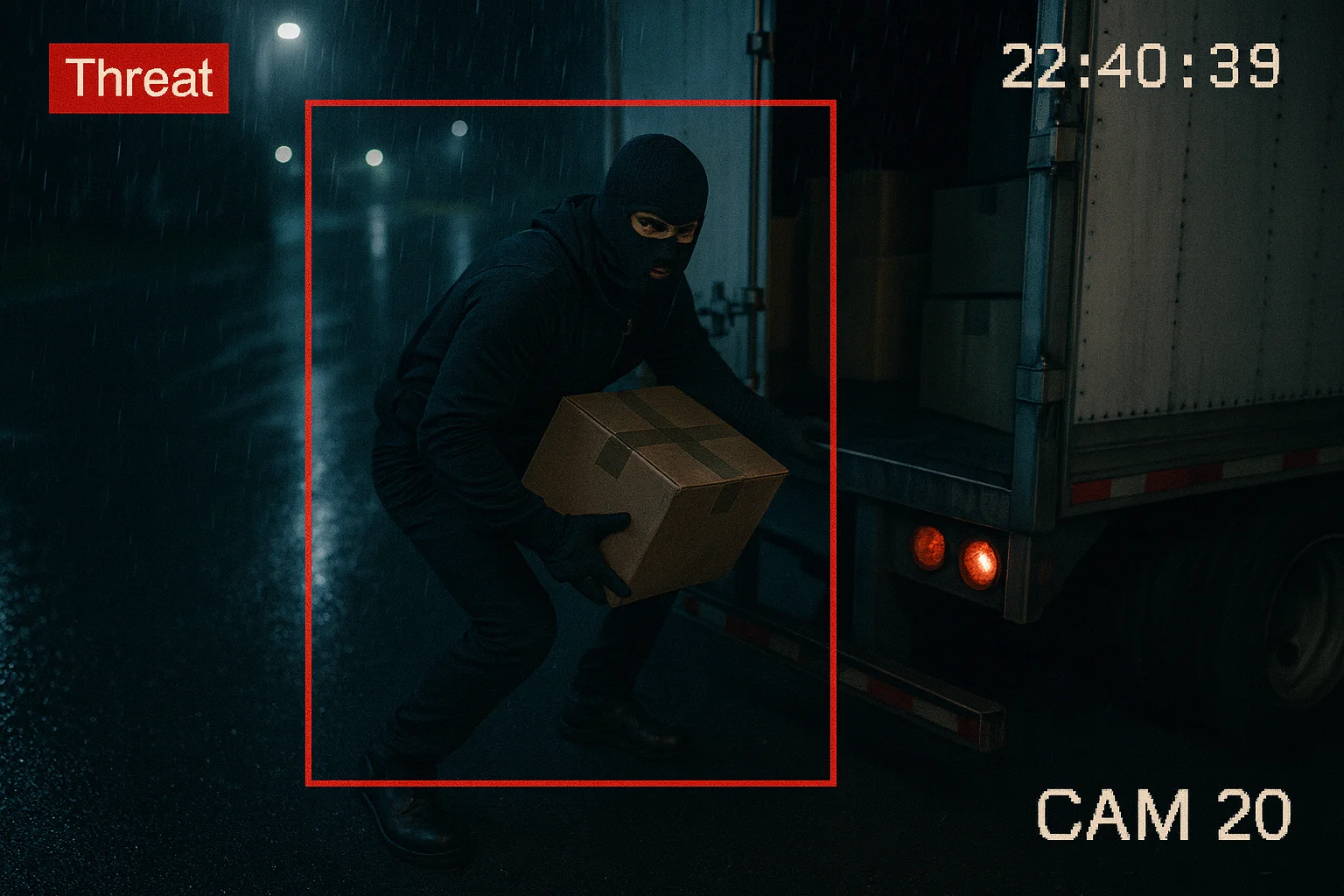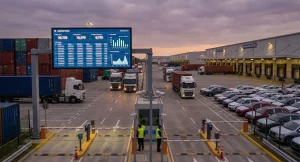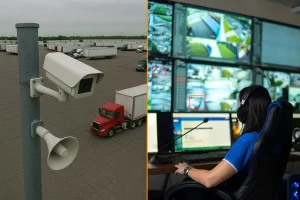Why modern fleets are rethinking how they protect assets, drivers, and supply chain continuity
Truck yards have long been the quiet backbone of logistics, places where cargo rests, drivers swap loads, and fleets reset before hitting the road again. But in 2025, those same yards have become one of the most targeted and complex security environments in the supply chain.
In the past year alone, cargo theft has surged across North America.
According to TruckNews.com, thieves in Ontario’s Peel Region, one of Canada’s busiest freight corridors, stole over 250 tractors and nearly 300 trailers in 2024, with numbers continuing to rise in 2025.
The National Insurance Crime Bureau (NICB) paints a similar picture in the United States, reporting that cargo theft incidents rose 27% in 2024, with California, Texas, and Florida leading in theft activity and 2025 data trending upward as organized crime groups become more sophisticated.
Truck yard security is no longer about fences and cameras, it’s about data, deterrence, and decision-making. Fleets are reimagining the yard as the frontline of logistics, where technology, process, and people converge to protect every mile of the journey.
1. The New Threat Landscape in Truck Yards
Cargo theft has evolved far beyond simple break-ins. Organized crime groups now track shipments digitally, clone access cards, and exploit weak perimeter systems to steal high-value loads.
According to Munich Re’s Cargo Theft Tactics and Trends Report 2025, criminals increasingly rely on identity deception and fraudulent pickups, often using falsified documents or stolen credentials to access secure facilities.
What makes truck yards particularly vulnerable is their dual function: they’re both operational hubs and storage zones. High asset density, frequent vehicle turnover, and variable staffing make them fertile ground for theft, especially after hours.
Yet this growing threat is also catalyzing progress. The logistics industry is now approaching yard security not just as loss prevention, but as risk intelligence, a data-driven layer of protection tied to compliance, insurance, and operational visibility.
2. From Cameras to Intelligence: What Modern Yard Security Looks Like
The future of yard security isn’t about adding more cameras, it’s about making those cameras smarter. Across North America, carriers and facility operators are adopting integrated systems that combine AI analytics, automated gate verification, and real-time alerts to improve both security and efficiency.
Here’s what leading fleets are doing differently:
- Real-time monitoring and AI analytics — Modern video systems detect anomalies such as unauthorized vehicle movement, tailgating, or after-hours activity, triggering alerts before an incident occurs.
- Integrated access control — Credentials, license plates, and Bill of Lading (BOL) data sync automatically at the gate to ensure every driver, truck, and trailer is verified. AI-driven ID validation also makes it far harder to enter with fake or duplicate credentials.
- Connected reporting — Yards now merge security and operational data to track dwell times, gate throughput, and compliance events — turning what used to be “security footage” into actionable business intelligence.
- Multi-site visibility — Fleet managers can oversee multiple yards remotely, ensuring consistent oversight and standardized protocols without the cost or staffing challenges of on-site guards.
3. Yard Security as an Operational Advantage
Yard protection is no longer just about preventing theft. It is about keeping operations moving.
When fleets integrate yard security into broader logistics systems, they uncover measurable benefits.
Reduced gate wait times
Automated credential verification speeds up truck movement and improves throughput.
Better compliance reporting
Digital logs simplify audits and demonstrate adherence to security and safety protocols.
Insurance benefits
Insurers increasingly offer lower premiums to fleets that use data-driven yard monitoring and verifiable access control.
Operational efficiency
With fewer bottlenecks and incidents, fleets can reallocate staff to higher-value roles.
As one logistics director quoted in Truck News explained, “What used to be a cost centre is now a visibility tool. Security has become part of our operations, not just protection.”
4. Practical Steps Fleets Can Take Now
If your fleet or facility team is re-evaluating yard security, consider these practical strategies.
Start with a vulnerability audit
Map your access points, blind spots, and after-hours traffic patterns. Compare them with local cargo theft data to understand your regional exposure.
Layer your defenses
Combine perimeter fencing and lighting with automated gate control, license plate recognition, and live monitoring. Layered systems deter more effectively than single-point solutions.
Integrate, do not isolate
Connect yard security platforms with your Transportation Management System (TMS) or Yard Management System (YMS) so data flows both ways. When security data becomes operational data, visibility improves across the board.
Train for protocol, not just technology
Even the best systems fail when people bypass procedures. Make adherence to security protocols part of your operational KPIs.
Collaborate regionally.
Participate in networks like CargoNet or The Canadian Trucking Alliance Cargo Theft Reporting Program, which share intelligence across carriers and law enforcement (CargoNet).
5. The Future of Truck Yard Security
Looking ahead, truck yard security will continue to merge with logistics technology. Expect to see:
- AI prediction models that identify theft risk before it occurs by analyzing patterns in vehicle movement and access data.
- Connected asset tracking that enables trailers, containers, and tractors to report real-time location, seal status, and entry logs directly to centralized dashboards.
- Collaborative data-sharing networks that allow carriers, insurers, and law enforcement to coordinate response and prevention.
- Security-as-a-Service models that offer subscription-based yard monitoring with built-in analytics, reporting, and remote response.
Truck yard security is no longer a back-office consideration. It has become a strategic pillar of supply chain resilience. Fleets that invest in smarter, data-led protection today are setting the standards for logistics security tomorrow.




